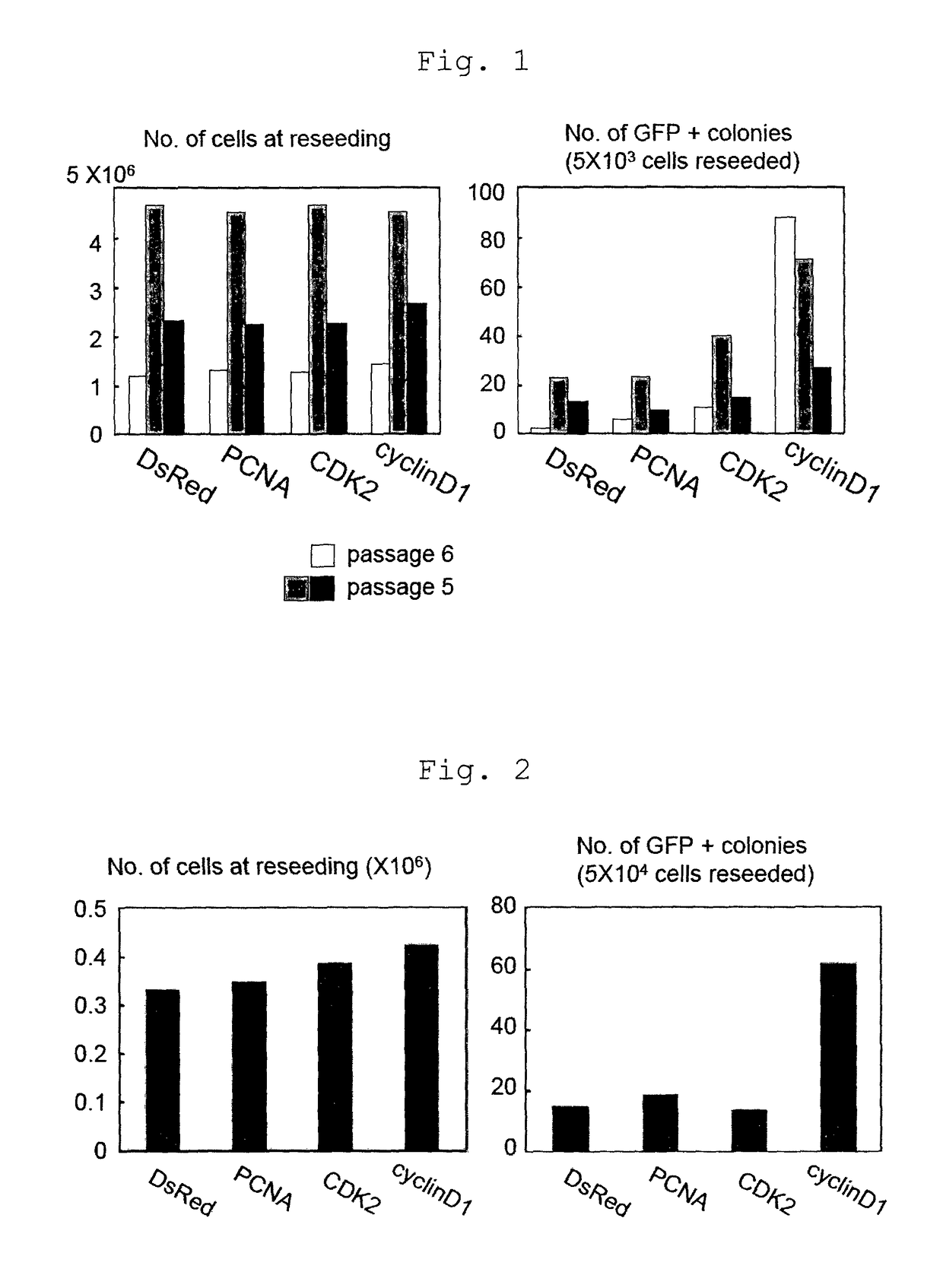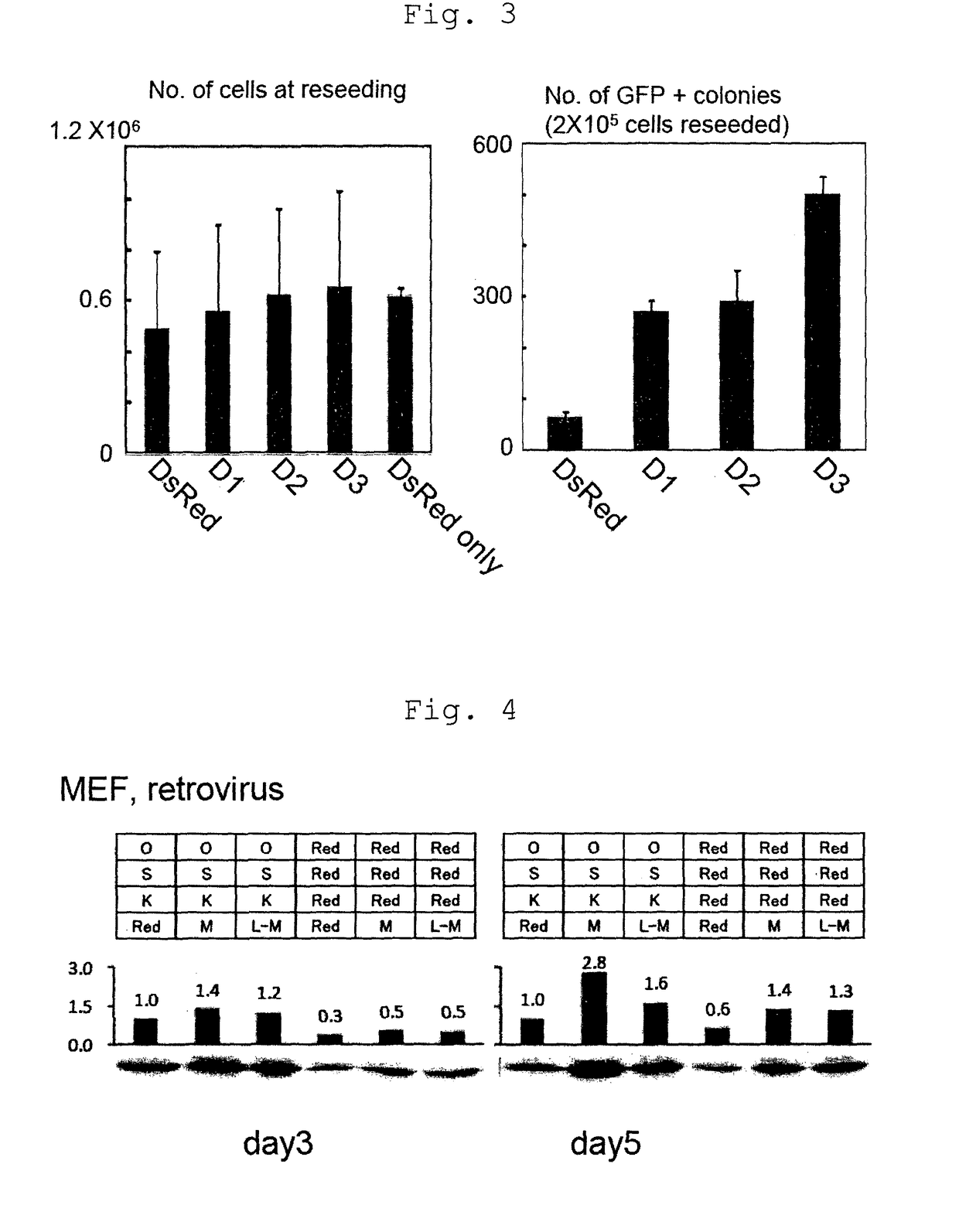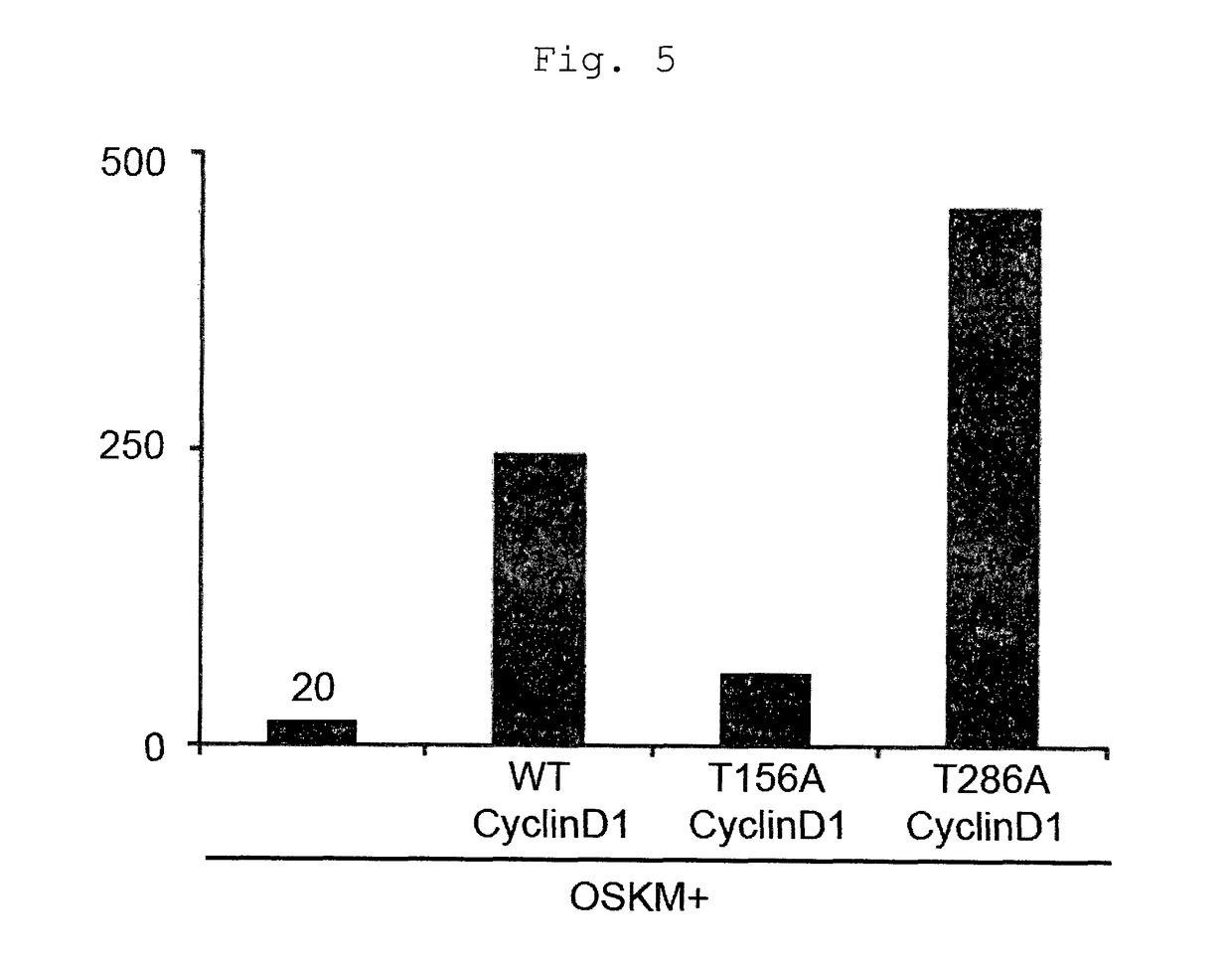Method of efficiently establishing induced pluripotent stem cells
a technology efficient establishment, which is applied in the field of improving the efficiency of establishment of induced pluripotent stem cells, can solve the problems of low efficiency of ips cell establishment at less than 1%, low and tumorigenesis in tissues or individuals, so as to increase the number of ips cell colonies and increase the efficiency of ips cell establishmen
- Summary
- Abstract
- Description
- Claims
- Application Information
AI Technical Summary
Benefits of technology
Problems solved by technology
Method used
Image
Examples
example 1
Consideration of Effect of p53-p21 Pathway-Related Factors on iPS Cell Establishment (1)
[0139]Whether or not various factors (PCNA, CDK2, Cyclin D1) present in the p53-p21 pathway influence the iPS cell establishment efficiency was examined.
[0140]The following genes were introduced by retrovirus into fetal fibroblasts (MEF) obtained from Nanog reporter mouse having Nanog-GFP-IRES-Puror (Okita K. et al, Nature 448, 313-317(2007)).[0141]1) mouse-derived Oct3 / 4, Sox2, Klf4, c-Myc, DsRed[0142]2) mouse-derived Oct3 / 4, Sox2, Klf4, c-Myc, PCNA[0143]3) mouse-derived Oct3 / 4, Sox2, Klf4, c-Myc, CDK2[0144]4) mouse-derived Oct3 / 4, Sox2, Klf4, c-Myc, Cyclin D1
[0145]The retrovirus was prepared by separately introducing a retrovirus expression vector (Cell, 126, 663-676 (2006)) into Plat-E cells (Morita, S. et al., Gene Ther. 7, 1063-1066) seeded in a 6-well culture plate (Falcon) at 0.6×106 / well the previous day. As the culture medium, DMEM / 10% FCS (DMEM (Nacalai tesque), 10% FCS, 50 units penici...
example 2
Consideraton of Effect for p53-p21 Pathway-Related Factors on iPS Cell Establishment (2)
[0149]An experiment similar to that of Example 1 was carried out by a combination of 3 genes (Oct3 / 4, Sox2, Klf4) instead of the 4 genes, and respective genes (PCNA, CDK2, Cyclin D1) of p53-p21 pathway.
[0150]The cells were counted when replating on day 5 from the infection, and the results are shown in FIG. 2 (left). In addition, the cells were replated in a 5×104 cells / 100 mm dish and GFP positive colonies were counted on day 30 from the infection. The results are shown in FIG. 2 (right). As in Example 1, even when PCNA, CDK2 or Cyclin D1 was added to the 3 genes, a remarkable cell proliferation promoting effect was not observed (FIG. 2, left). However, when Cyclin D1 was added, a remarkable increase in the number of iPS cell colonies was observed (FIG. 2, right). From the above-mentioned results, it is clear that iPS cell establishment efficiency increases not only in the 4 genes but also the 3...
example 3
Consideration of Effect of Cyclin D Family on iPS Cell Establishment
[0151]Whether or not Cyclin D2 and Cyclin D3, which are factors belonging to Cyclin D family, have an iPS cell establishment efficiency increasing effect similar to that of Cyclin D1 was examined. The experiment was carried out in the same manner as in Example 2, by a combination of 3 genes (Oct3 / 4, Sox2, Klf4) and respective genes (Cyclin D1, Cyclin D2, Cyclin D3) of Cyclin D family.
[0152]The cells were counted when replating on day 5 from the infection, and the results are shown in FIG. 3 (left). In addition, the cells were replated in a 2×105 cells / 100 mm dish and GFP positive colonies were counted on day 28 from the infection. The results are shown in FIG. 3 (right). As the results, average values of three experiments are shown. Even when Cyclin D1, Cyclin D2 or Cyclin D3 was added to the 3 genes, a remarkable cell proliferation promoting effect was not observed (FIG. 3, left). On the other hand, when Cyclin D2 ...
PUM
| Property | Measurement | Unit |
|---|---|---|
| temperature | aaaaa | aaaaa |
| diameter | aaaaa | aaaaa |
| time | aaaaa | aaaaa |
Abstract
Description
Claims
Application Information
 Login to View More
Login to View More - R&D
- Intellectual Property
- Life Sciences
- Materials
- Tech Scout
- Unparalleled Data Quality
- Higher Quality Content
- 60% Fewer Hallucinations
Browse by: Latest US Patents, China's latest patents, Technical Efficacy Thesaurus, Application Domain, Technology Topic, Popular Technical Reports.
© 2025 PatSnap. All rights reserved.Legal|Privacy policy|Modern Slavery Act Transparency Statement|Sitemap|About US| Contact US: help@patsnap.com



